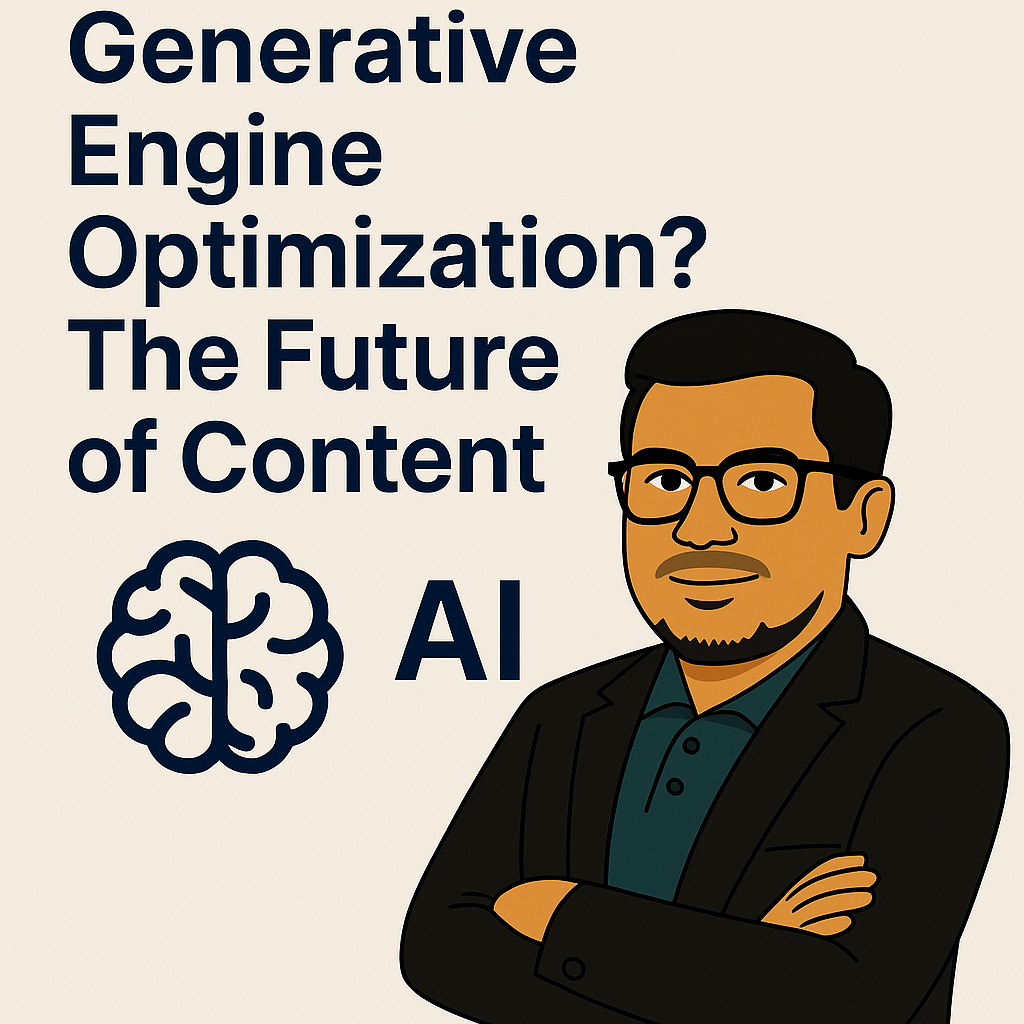
By Asif Ikbal Bhuiya – Global Marketing & Sales Tech Leader | Director @ RINGFEDER | AI-Driven B2B Strategist
In 2025, we’re no longer asking: “How do I rank on Google?”
We’re asking: “How do I become the answer selected by AI?”
That’s the core of Generative Engine Optimization (GEO) — a new discipline shaping the next phase of digital visibility.
As someone leading digital transformation in Germany’s industrial B2B sector, I’ve spent years optimizing for search engines. But now, I’m building strategies for something even bigger:
Visibility in AI-generated answers.
And I’m here to tell you: GEO is not a trend — it’s the future.
🔄 From Search Engines to Answer Engines
Traditional SEO is based on crawling, indexing, and ranking.
But tools like ChatGPT, Bing Copilot, Perplexity, and Gemini work differently:
- They don’t show a list of links.
- They generate a direct, synthesized answer.
- They rely on contextual embeddings, authority, and relevance.
In this system, there’s no “position 1”.
There’s only: 🟢 “Are you the chosen source, or not?”
🧠 What is GEO, Technically?
GEO (Generative Engine Optimization) is the process of:
- Structuring content to be retrievable and reusable by generative AI systems.
- Establishing digital authority and topical relevance across trusted sources.
- Embedding your brand, voice, and expertise into the “training diet” of modern AI.
Where SEO optimizes for indexing… GEO optimizes for answer synthesis.
It’s about becoming:
- LLM-prompt friendly
- Contextually aligned
- Structurally useful (via Q&A format, schema, tables, bullet logic)
- Credible enough to be surfaced without a backlink
🧪 Why I Know GEO Is Real (My Current Practice)
This is not theory. In my current role, I lead the global digital strategy for an industrial engineering brand trusted in 100+ countries.
Here’s what I’ve started doing:
- Asking customer-like questions in ChatGPT to see where we’re mentioned (or not).
- Testing how blog structures, metadata, or visuals affect visibility in tools like Perplexity.ai.
- Designing content workflows that combine SEO logic with AI retrievability.
- Documenting my findings in this public blog series — so others can learn what works.
I believe GEO is the new competitive edge — especially in B2B industries where trust, technical clarity, and relevance matter more than hype.
🏭 Why German Industry (and the World) Needs GEO Now
In Germany, I still see many B2B marketers:
- Overinvesting in Google rankings
- Undervaluing AI assistants like ChatGPT and Perplexity
At the same time, buyers and teams are already:
- Using ChatGPT for pitch prep
- Comparing products via Bing Copilot
- Expecting instant, confident answers instead of a list of blue links
This is the age of zero-click, AI-first discovery. GEO is your way into that pipeline.
💡 The Key Elements of GEO
Let’s break it down:
| Concept | SEO | GEO |
|---|---|---|
| Engine Type | Crawler-based | AI model-based |
| Goal | Rank in search results | Be used in answers |
| Structure | HTML, meta tags | Semantic clarity, Q&A, promptability |
| Signals | Backlinks, speed | Authority, context, structure |
| Visibility | User click | AI output (zero-click) |
| Main Tool | ChatGPT, Gemini, Bing, Perplexity |
To win at GEO, you need to:
- Understand how LLMs process and recall information
- Create content that fits the shape of a good answer
- Tie your name, brand, and topics together in structured, trustable formats
🚀 Why GEO Will Outlive SEO
Here’s the honest truth:
SEO is still alive — but it’s no longer the only game in town.
Modern AI systems don’t care about your keyword density.
They care about:
- Clarity
- Structure
- Authority in topic clusters
- Cross-platform consistency (LinkedIn, blog, YouTube, etc.)
GEO isn’t replacing SEO. It’s extending it into a new era where:
- You train the engines by how you write
- You get selected because you’re understood, not just optimized
- Your digital reputation becomes your most important ranking factor
🧭 Final Thought: The Time to Act Is Now
You don’t need to be a developer or prompt engineer to do this.
You just need to:
- Understand how AI engines choose content
- Adapt your structure, voice, and topics
- Stay consistent across your platforms
- Lead with authentic expertise, not trendy content
In the next post, we’ll dive into how generative engines like ChatGPT and Gemini actually work — and how to reverse-engineer their logic to increase your chances of being cited, surfaced, or paraphrased.
Because in this new world, you’re either the answer… or you’re invisible.